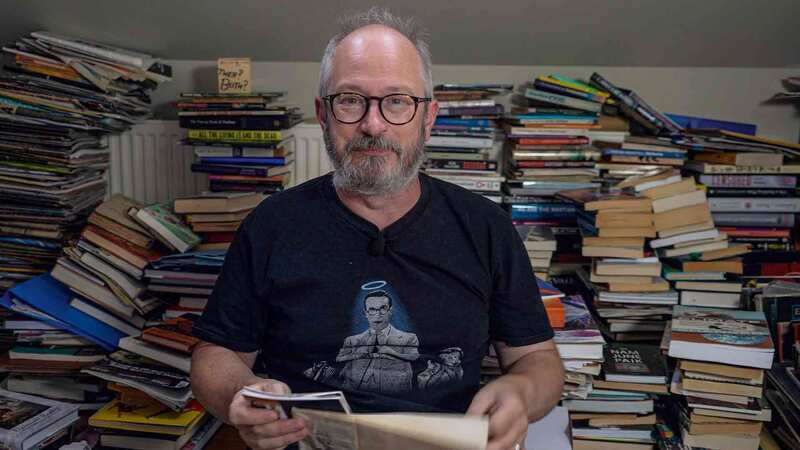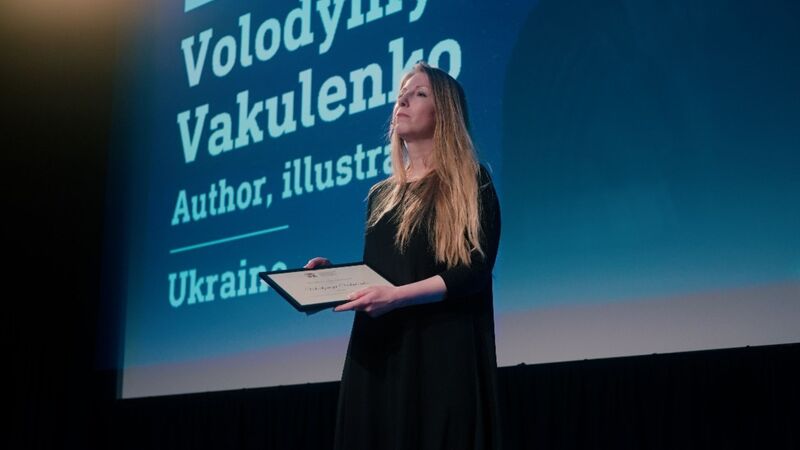You are viewing your 1 free article this month. Login to read more articles.
Katherine Arden in conversation about evil, memory and the First World War
Katherine Arden‘s new historical fantasy sets its sights on the nature of evil.
Katherine Arden has a curious name for her latest novel, The Warm Hands of Ghosts, referring to it in our conversation and online as “The Fiend”. Speaking over video call from her home in snowy Vermont, Arden explains her peculiar epithet: “It took several tries, and the early tries were not good at all. I definitely had some moments where I was like: ‘It’s not going to work. The idea is not going to work. It’s fundamentally a flawed concept’… I was getting more and more annoyed at it and that was when I started calling it ‘The Fiend’.”
Although it took four years to write and research the novel, including five discrete drafts and a phone call to her agent saying the book would never be completed, The Warm Hands of Ghosts is exquisite and set to be one of the defining books of Arden’s career. The years of craft have produced an enviable result of which Arden is fiercely protective. When asked to include a deleted scene for a special edition, she thought: “‘Absolutely not.’ If I wanted to say it, I will say it in the book… I will write about and talk about the novel, [but] it is finished and not to be revisited in a creative sense.”
I’ve always been interested in how fantasy can elucidate history
Set across two timelines, The Warm Hands of Ghosts follows Canadian nurse Laura in 1918 as she returns to the Western Front to discover what happened to her brother Freddie. In alternating chapters, we stay with Laura as she works in a hospital near the Front, and also follow Freddie in the aftermath of the Battle of Passchendaele, 1917. He is haunted by the war and when he stumbles across the malevolent musician Faland, Freddie stays with him in the despairing hope of escaping the war. But Faland is no mere musician, he is the Devil, and, while Freddie learns of Faland’s power to feed off memories to transform them into music, Laura’s search becomes increasingly fraught as she hears soldiers tell tales both cursing and praising a wandering fiddler who offers a reprieve from battle.
When I ask Arden whether The Warm Hands of Ghosts is a departure from her previous adult fantasy novels, she responds: “It is a departure in the sense that the topic, the time period and the voice are all different. I think it’s the same in that I’ve always been interested in historical inflection points… I’ve always been interested in how fantasy can elucidate history.” The novel sits within historical fantasy, but it is not only for fantasy readers. The years of extensive research and copious reading Arden undertook make the novel a rich addition to the literature of the First World War and suitable for historical fiction and non-fiction readers alike. Even the ghosts, one of the fantastical elements of the book, are inspired from contemporaneous memoirs: “Soldiers were very superstitious, there were tons of miracles and ghosts— almost every memoir had a ghost story in it.”
Faland is the novel’s big enigma. Who is this Devil, this musician, this veteran who devours soldiers’ memories? In her afterword, Arden confesses how “after five years living with him, I hardly know”, but asserts when we speak how Faland is the “lynchpin” of the story: “Without him the book didn’t work.”
Initially having Faland and the war exist in the same space posed a problem for Arden and brought into question the nature of evil. The issue turned on how to make Faland’s quiet malevolence resonate with the widespread terror of the war. “The thing about the ‘classic’ Devil is that he knows you, he understands you and then corrupts you, like Mephistopheles and Faust. It’s a very intimate moment… which is almost the opposite of this modern hellscape where it doesn’t matter who you are, it erases you. It doesn’t matter if you’re brave, cowardly or virtuous, you’ll be erased by chance. It’s this very mechanical space. I feel like somebody who loves the intricacies of the human heart, even if he wants to tear it apart, would be an interesting character to see in a world where the human heart doesn’t really matter.”
It felt like I was, to a certain extent, exploiting this time, these people’s memoirs. As a writer you take pieces and you cannibalise them and you make something.
In some ways Arden’s Devil, who displays hints of John Milton’s Lucifer and Mikhail Bulgakov’s Devil from The Master and Margarita, acts as an “author stand-in” where Arden grapples with the weight of both her subject and duty to the soldiers, nurses and civilians she read about. For, like Faland, although without the malignity, she is taking from the experiences of others: “It felt like I was, to a certain extent, exploiting this time, these people’s memoirs. As a writer you take pieces and you cannibalise them and you make something. Faland is also taking pieces of people and cannibalising them for his music… It can feel callous sometimes when you are trying to pull apart experiences and appropriate them for yourself and your own work.”
It was thus important to ensure the fantasy element did not feel “lightweight, silly or exploitative” but gave the subject and the history nuance. “I wanted to say something real or say something that’s true about history, not just have the First World War as the backdrop for my fantasy plot”, says Arden. Through Faland and Freddie’s dynamic we see how the First World War destroyed the lives of everybody it touched. In Arden’s words, the novel asks: “What’s worse? Is it the mechanical, large scale, mass erasure or is it one guy picking you apart piece by piece?”
On holiday in Halifax, Canada, Arden visited a museum with a wing which is dedicated to the explosion caused by the accidental collision of the “Mont-Blanc” munitions ship and another vessel. This relatively unknown part of history formed the foundation of Laura’s backstory as did the “contemporary disrespect of the working [class] nurses”. When reading nurses’ memoirs Arden found the women who penned these pieces were volunteers and the professional nurses, who worked before the war, were “often sidelined, with a bit of a comment or a joke even”. Arden hoped to right this oversight by creating Laura who joins the war effort after completing her nursing qualifications.
read no memoir where somebody expressed how they were feeling, and I think partially that was the culture and partially it was trauma.
The veil between life and death is thin in Arden’s novel. Through Freddie we see the hellish life of a soldier and Faland’s accursed labyrinthine realm and with Laura we witness the hospital, itself a type of battleground, and the wasteland left by years of bombing. Importantly, the stark language Arden uses for Laura is a response to such hellscapes: “I read no memoir where somebody expressed how they were feeling, and I think partially that was the culture and partially it was trauma. You don’t want to feel how you are feeling because that’s opening a giant, horrible can of worms. Getting Laura on the page was in part about how much emotion of hers to put down because she’s not feeling her feelings either. No one is. You can’t be. People turn that off in these situations.”
As the novel moves toward its fiery, bittersweet ending, Arden refuses to entertain clear-cut answers, but explains how “the main point to the book is that people save us”. In a fevered dream, Laura sees Faland, who intones: “The blessed forget and the damned remember.” The Warm Hands of Ghosts carries extraordinary weight and, damned or not, remains a book you won’t forget reading.











